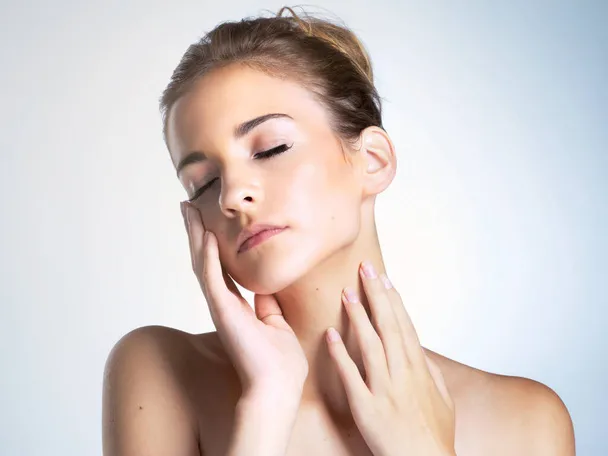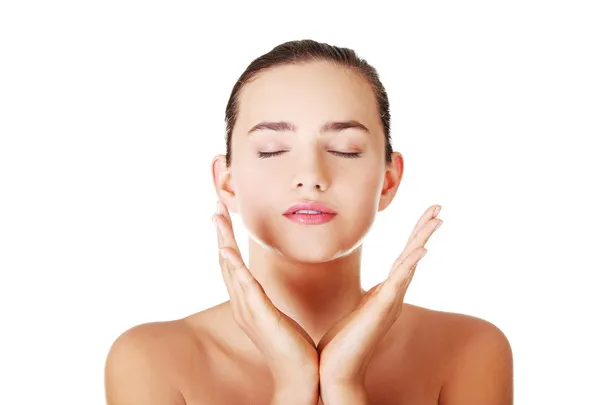Understanding Keloid Scars from Piercings
Keloid scars are raised, reddish-purple scars that develop at the site of a wound or injury, such as a piercing. While not harmful, keloids can be cosmetically bothersome and may cause itching, discomfort, or tenderness. When it comes to keloid scars from piercings, understanding their causes, symptoms, and treatment options is essential for effective management and prevention.
Causes of Keloid Scars from Piercings
Keloid scars result from an overgrowth of scar tissue in response to skin injury, such as piercing trauma. Factors that contribute to the development of keloids include:
- Genetic Predisposition: Keloid formation has a strong genetic component, meaning that individuals with a family history of keloids are more likely to develop them themselves. Certain genetic factors influence how the body responds to injury and repair, including the regulation of collagen production and inflammation. In families where keloids are common, there may be an inherited tendency for the body to overproduce collagen during the wound healing process. This excessive collagen production leads to the formation of raised, fibrous scars characteristic of keloids. While not all individuals with a family history of keloids will develop them, genetic predisposition plays a significant role in determining susceptibility.
- Trauma: Excessive trauma or tension during the piercing process can significantly increase the risk of keloid formation. When the skin is pierced, it undergoes physical trauma, triggering the body’s wound healing response. If the piercing procedure involves excessive force, improper technique, or the use of unsuitable equipment, it can cause additional trauma to the surrounding tissue. This trauma disrupts the normal healing process and may stimulate the overproduction of collagen, leading to keloid formation. To minimize the risk of keloids, it’s essential to choose a professional piercer who employs proper techniques and equipment and to avoid unnecessary trauma during the piercing procedure.
- Poor Aftercare: Proper aftercare is crucial for preventing keloid formation after a piercing. Inadequate aftercare practices, such as improper cleaning or irritation of the piercing site, can contribute to keloid formation. Without proper care, the piercing site may become contaminated with bacteria or other pathogens, increasing the risk of infection. Infection and inflammation can further disrupt the wound healing process and promote the development of keloids. To reduce the risk of keloids, individuals should follow the aftercare instructions provided by their piercer, which typically involve cleaning the piercing site regularly with a saline solution and avoiding activities that may irritate or traumatize the area.
- Foreign Bodies: Prolonged irritation from jewelry or other foreign bodies can also trigger keloid formation in susceptible individuals. Certain materials used in piercing jewelry, such as nickel or cobalt, can cause allergic reactions or irritation in some people, leading to inflammation and tissue damage. Additionally, wearing jewelry that is too tight or putting pressure on the piercing site can disrupt the healing process and increase the risk of keloids. To minimize the risk of keloid formation, it’s important to choose high-quality, hypoallergenic jewelry and to avoid wearing overly tight or restrictive pieces. Regularly inspecting the piercing site for signs of irritation and seeking prompt medical attention if any issues arise can also help prevent keloids.
- Itching: One common symptom associated with keloid scars is itching. Keloids may cause persistent itching or discomfort, especially during the healing process. This itching sensation can vary in intensity and may interfere with daily activities. Itching is often a result of the body’s inflammatory response to the abnormal collagen production characteristic of keloids. The exact cause of itching in keloids is not fully understood, but it may be related to nerve irritation or the release of certain chemical substances in the scar tissue. Managing itching associated with keloids can be challenging, but gentle moisturizing creams or over-the-counter antihistamines may provide temporary relief. However, it’s essential to avoid scratching or picking at the keloid, as this can worsen inflammation and potentially lead to infection.
- Tenderness: Another common symptom of keloid scars is tenderness or sensitivity in the affected area. The skin surrounding the keloid may feel tender to the touch, particularly if the keloid is large or located in a sensitive area, such as the chest or earlobe. Tenderness can be exacerbated by factors such as friction from clothing or jewelry, pressure from everyday activities, or exposure to environmental irritants. In some cases, tenderness may persist for an extended period, even after the keloid has fully formed. To alleviate tenderness associated with keloids, individuals can try avoiding activities or behaviors that aggravate the symptoms, such as wearing tight clothing or excessive pressure on the affected area. Applying a cold compress or taking over-the-counter pain relievers may also provide temporary relief.
- Excessive Growth: One of the hallmark characteristics of keloid scars is their tendency to grow beyond the boundaries of the original wound. Unlike typical scars, which gradually fade and flatten over time, keloids may continue to grow larger and thicker, resulting in a more prominent scar. This excessive growth can be distressing for individuals affected by keloids, as it may lead to cosmetic concerns and functional limitations, particularly if the keloid is located in a visible or frequently moved area, such as the face or joints. The mechanisms underlying the excessive growth of keloids are not fully understood but are thought to involve dysregulation of the wound healing process and abnormal collagen synthesis. Treatment options for keloids aim to reduce their size and thickness, but recurrence is common, and complete resolution may be challenging to achieve.
- Corticosteroid Injections: One of the most common treatments for keloid scars is corticosteroid injections. Injecting corticosteroids directly into the keloid can help reduce inflammation and flatten the scar. Corticosteroids work by inhibiting the inflammatory response and reducing the production of collagen, which contributes to the excessive growth of keloids. Multiple injections may be required over several weeks or months to achieve optimal results. While corticosteroid injections can effectively shrink keloid scars, they may cause side effects such as skin atrophy, hypopigmentation, or telangiectasia in some individuals.
- Silicone Gel or Sheets: Another popular treatment option for keloid scars is silicone gel or sheets. Silicone products create a barrier over the keloid scar, trapping moisture and creating a more favorable environment for healing. Additionally, silicone helps to soften and flatten the scar tissue over time, reducing its size and thickness. Silicone gel or sheets are typically applied directly to the keloid and worn continuously for several hours each day. While silicone therapy is generally safe and well-tolerated, it may take several months to see noticeable improvements in the appearance of the keloid scar.
- Cryotherapy: Cryotherapy involves freezing the keloid with liquid nitrogen to reduce its size and minimize symptoms. During the procedure, a healthcare provider applies liquid nitrogen to the keloid using a specialized applicator or probe. The extreme cold temperature destroys the abnormal scar tissue and triggers the body’s natural healing response. Cryotherapy may cause temporary discomfort or blistering at the treatment site, but these side effects typically resolve within a few days. Multiple cryotherapy sessions may be needed to achieve satisfactory results, and some individuals may experience recurrence of keloids following treatment.
- Laser Therapy: Laser treatments are another option for reducing the size and appearance of keloid scars. Laser therapy works by targeting blood vessels within the keloid tissue, causing them to shrink and reducing redness. Additionally, lasers can stimulate collagen remodeling, leading to a smoother and flatter scar surface. Different types of lasers may be used depending on the characteristics of the keloid, such as pulsed dye lasers, fractional lasers, or carbon dioxide lasers. Laser therapy is generally well-tolerated, but it may require multiple sessions to achieve optimal results. Side effects may include temporary redness, swelling, or changes in pigmentation.
- Surgical Excision: In some cases, surgical removal of the keloid scar may be considered, particularly for smaller keloids or those that do not respond to other treatments. During surgical excision, the keloid is cut out of the skin, and the wound is closed with sutures. However, there is a risk of recurrence with surgical excision, as cutting into the keloid can stimulate further scar formation. To reduce the risk of recurrence, corticosteroid injections or other adjuvant therapies may be used in conjunction with surgical excision.
- Pressure Therapy: Applying pressure to the keloid scar with specialized pressure garments or dressings can help flatten the tissue and prevent further growth. Pressure therapy works by compressing the keloid, reducing blood flow to the area, and inhibiting collagen production. Pressure garments are typically worn continuously over the keloid for several hours each day, while dressings may be applied directly to the scar and secured with adhesive tape. Pressure therapy may take several months to achieve noticeable results, and compliance with wearing the garments or dressings is essential for success.
- Choose a Professional Piercer: When considering a snake eyes piercing, it’s crucial to select an experienced and reputable piercer who prioritizes hygiene and safety. Look for a piercer who operates in a clean and sterile environment, uses sterile equipment, and follows proper piercing techniques. Additionally, inquire about their experience with snake eyes piercings specifically and ask to see examples of their previous work. By choosing a skilled professional, you can reduce the risk of complications and ensure a successful piercing experience.
- Practice Good Aftercare: Proper aftercare is essential for promoting healing and reducing the risk of complications after getting a snake eyes piercing. Follow the aftercare instructions provided by your piercer diligently, which may include cleaning the piercing site with saline solution or a mild antibacterial soap multiple times a day. Avoid touching the piercing with dirty hands and refrain from playing with the jewelry to prevent irritation or infection. Additionally, avoid swimming in pools, hot tubs, or natural bodies of water during the initial healing period to minimize the risk of contamination.
- Avoid Excessive Trauma: Minimize activities that may put pressure or tension on the piercing site, as excessive trauma can delay healing and increase the risk of complications. Avoid wearing tight clothing or accessories that may rub against the piercing, and be mindful of sleeping positions that may cause discomfort or irritation. If you participate in contact sports or activities that pose a risk of injury to the piercing, consider using protective gear or temporarily removing the jewelry until the piercing has fully healed.
- Monitor for Signs of Keloids: Keep a close eye on the piercing site for any signs of keloid formation, which is an abnormal growth of scar tissue. Symptoms of keloids may include excessive swelling, redness, tenderness, or itching around the piercing site. If you notice any signs of keloids developing, such as raised or thickened scars, consult with a healthcare professional promptly. Early intervention is key to managing keloids effectively, and your healthcare provider can recommend appropriate treatment options to address the issue.
Symptoms of Keloid Scars
Keloid scars from piercings are characterized by their raised, firm texture and reddish-purple coloration. Other common symptoms include:
Treatment Options for Keloid Scars
While keloid scars cannot be completely removed, various treatment options can help reduce their size, alleviate symptoms, and improve their appearance. These include:
Preventing Keloid Scars
Prevention is key when it comes to keloid scars from piercings. To minimize the risk of keloid formation, individuals should:
By understanding the causes, symptoms, and treatment options for keloid scars from piercings, individuals can take proactive steps to manage and prevent these troublesome scars. Working closely with a healthcare professional or dermatologist can help tailor a treatment plan to address individual needs and achieve optimal results.










